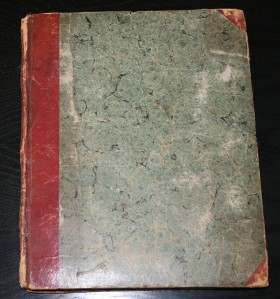
The front cover of the Grand Tour letters of Richard Bealey doesn't look very inspiring, but inside we are transported back to the world of the nineteenth century tourist.
The Grand Tour letters were written by Richard Bealey to his mother, brother Adam, and his sister Elizabeth, whilst on his adventures in France and Italy with his two cousins, John and George Morley in 1830.
The letters have been transcribed into a book, possibly as handwriting practice for a younger sibling, or indeed for one of Richard’s own children, many years after the event. The writing is typical of the time, a respectable copperplate style, and some other hand has written in a few corrections. Some pages are rather faded and were exceptionally challenging to transcribe. In all, I think it took me three intensive weeks to transcribe the letters to a reasonable standard, though I know there will still be some errors.
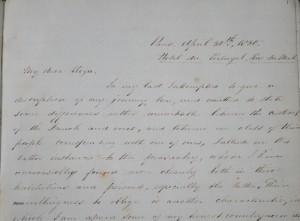
On the first page of the letters, Richard talks about the differences in customs between the English and the French. You can see how neat the handwriting is but the ink is faded which makes it difficult to read.
Richard Bealey certainly must have had a classical education, as there are numerous references to philosophers, and renaissance painters, which appear to literally “roll off his tongue”. He used a very wide vocabulary, and has written some very descriptive passages, especially of some of the more scenic areas that they travelled through.
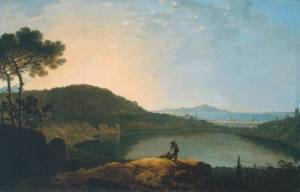
Richard's description of the scenery as he travelled brings his journey to life and helps us imagine what he saw.
They visited many churches, cathedrals, museums and galleries on their tour. I did struggle with the names of some of the lesser known painters and sculptors they encountered on their visits. With the aid of a very good reference book to the art treasures of Italy, I think I managed to decipher most of the artists. Likewise, modern maps of France and Italy proved invaluable when trying to piece together the route that they took.
One of his early letters described their visit to the Jardin des Plants in Paris, where they encountered elephants, camels, buffalos, and even a giraffe.
As he has gone to great lengths to describe the giraffe, I presume it was an uncommon sight in those days. He describes what the giraffe’s body looked and felt like. Obviously in 1830 it was possible to physically touch the animals.
“Another division of the Menagerie comprises Elephants, Camels, Buffalos, etc, and among them the Giraffe of notable memory; a beautiful quadruped this, exceeding far all the accounts we have received, it is in excellent health and presents a perfect specimen of his kind to the Naturalist, his majestic stature & graceful motion give him an air of superiority and distinction. The contrast between the large dark spots that cover his body, and the bright yellow ground is exceedingly good; at present his coat is quite smooth and fleecy, what it may be in the Winter I cannot tell; I should fear the cold weather will injure it and destroy his health. The Giraffe is of a sociable disposition, having chosen an Egyptian cow for its companion,and hardly quits it a moment the whole day.”
In another letter he appears to be astounded that the Parisians are quite happy to spend their Sunday afternoons indulging themselves in the Gardens of the Tuileries, watching such things as a Punch & Judy show.
In another letter he describes their rush to reach the south coast of France in order to see the French Fleet before it set sail for battle in Algiers, under General de Bourmont. They travelled two days and two nights in a carriage to Marseilles, only to set off almost immediately to Toulon on yet another overnight journey.
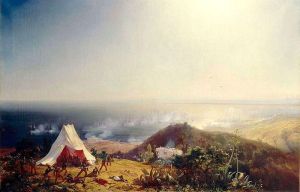
Richard raced to the coast at Marseilles see the french fleet before it sailed into battle at Algiers.
Transport was either by horse and carriage, or by sea. The most common form of carriage they travelled in was called a Diligence. Whilst in Italy on one overnight journey, the straps holding their luggage were deliberately cut by some “rascals” who climbed onboard, so that their possessions would fall to the road and could be retrieved by the thieves. One of the passengers inside the carriage raised the alarm and the carriage was halted so that the luggage could be reclaimed. Richard Bealey lost his hat in this robbery.
In Rome they saw a most spectacular procession for Corpus Christi, which was made up of large groups of many different religious orders of monks, lay brethren, various clergy, Cardinals and the Pope, Pius 8th. All were wearing their finest regalia. They visited several museums and galleries in Italy, and he has described some visits in such detail that one could imagine being there beside him.

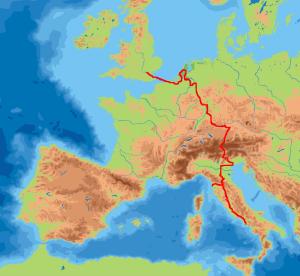

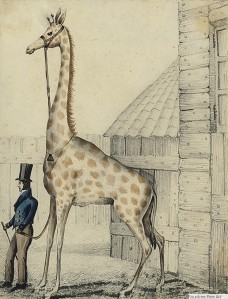

Congratulations on your Blog and I am sorry that I could not travel to Manchester to hear the talk. As a descendant of Mary Bealey b. 1772 I would have liked to print off the Family Tree to bridge the gap but, sadly, I have wasted a lot of paper and only ever manage to get page 1 of 1. It would help if the pages were numbered but I am sure that you will be dealing with that, and I am an old lady so may be making errors on my computer. Nevertheless, I did contact you previously to say that my Father was in the RFC and joined in 1917 – just after Adam died – but that is another story!